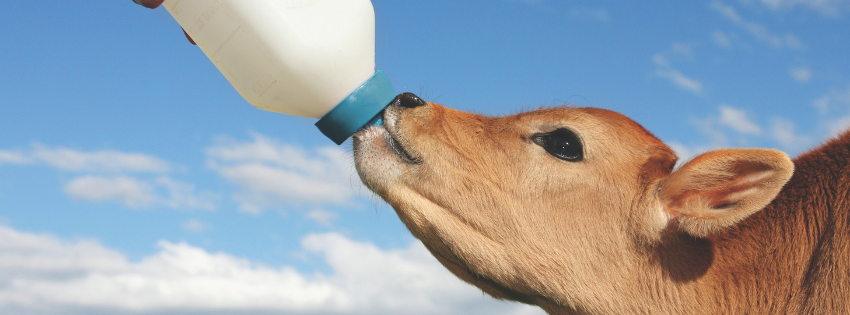Calves left to suckle the dam for colostrum intake are at a greater risk of low antibody absorption and increased morbidity and mortality.
Research has shown that dairy calves should be actively fed good quality colostrum as soon as possible after birth in order to benefit in the short and long term.
Active feeding involves providing colostrum to the calf by teat or tube feeder but the method of active feeding can affect colostral antibody absorption.
Which method should you use?
The anatomy of the calf
Adult cows have four functional stomachs: the rumen, the reticulum, the omasum and the abomasum.
In the pre-weaned calf, liquid milk and colostrum are digested in the fourth stomach, the abomasum.
In order for this to happen efficiently, calves are born with a muscular fold of tissue which when closed, forms a channel between the bottom of the oesophagus and the abomasum.
This is called the oesophageal groove. When the groove is closed, milk can bypass the first three stomachs, enabling liquid feed to be deposited directly into the abomasum.
The closure of the groove relies on a reflex which is triggered by the sights, sounds and smells of milk or colostrum feeding.
Drinking water is unlikely to stimulate this reflex. The action of sucking is a strong stimulus for closure of the oesophageal groove.
Teat vs. Tube feeding
Teat feeding stimulates the natural reflex closure of the oesophageal groove, depositing colostrum and milk directly into the abomasum. This is the major benefit of teat feeding.
Fluid delivered by a tube feeder does not stimulate this reflex closure and fluid is deposited into the first three stomachs.
This results in a time delay for absorption of colostral antibodies in calves fed colostrum with a tube feeder.
Colostrum needs to pass from the first three stomachs to the abomasum and then to the small intestine for antibody absorption.
Studies have shown that the volume of colostrum fed by a tube feeder has an effect on the level of absorption of antibodies from colostrum.
Only 42% calves fed a small volume of colostrum (1.5L) by tube feeder had acceptable passive transfer of immunity, compared to 100% calves fed the same volume by a teat feeder.
However, calves fed a larger volume (3L) of colostrum with either a tube feeder or a teat feeder had no difference in passive transfer of immunity.
This shows that when calves are tube fed larger volumes of colostrum, there is overflow from the first three stomachs and rapid passage to the abomasum.
Which tube feeder?
Surprisingly, most commercially available tube feeders have a volume less than 2 litres.
Calves fed less than 2 litres of colostrum by tube are at a greater risk of failure of passive transfer of immunity compared to calves fed 2 litres of colostrum by teat.
Higher volumes need to be tube fed to overcome this.
It is recommended to measure the actual capacity of your tube feeder to check the maximum volume that can be fed in one instance.
Tube feeding the same calf multiple times in succession to achieve a higher overall volume is not only time consuming but increases the risk of aspiration and damage to the oesophagus.
Thus, it is worth investing in a larger capacity tube feeder so that only one procedure is necessary.
One such product is the increasingly popular Antahi Trusti Tuber. This relatively new, multi-award winning tube feeder has a 4-litre capacity.
It has been designed by veterinarians with calf comfort and efficiency in mind. The combination of mouthpiece, soft flexible tube, specially designed safety tip and calf size markers ensure maximum calf well-being and safety, and usability during tube feeding.
A small trial showed that the Trusti Tuber had an 88 per cent reduction in stress to calves compared to traditional rigid-tube feeders.
The procedure time was almost halved because the tube feeding was smoother and easier.
Speak with your veterinarian about higher volume tube feeders and how they should be used to feed colostrum to your calves.
This article was written by Dr Gemma Chuck who is an adviser with Apiam Animal Health. Article originally published on www.dairynewsaustralia.com
For more blog posts about calf nutrition, click here.




